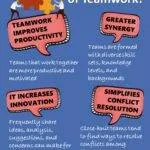
The Fist to Five Consensus Technique
Fist to Five is an interesting consensus-building technique to poll team members and come to the best agreement quickly. This is a decision-making method for groups where each person expresses their opinion by holding up a hand with fingers numbering 0–5.
Unlike typical consensus where each person only has one vote, Yes or No, this voting is a method to gauge the general level of agreement based on how many fingers each meeting participant holds up. A fist indicates no agreement, whereas holding up five fingers expresses total unity.
One to four fingers allow participants to show some support or opposition according to this standard.
- Closed fist. Total opposition. A closed fist is a way to block consensus
- One finger. I have major concerns
- Two fingers. I would like to discuss some minor issues
- Three fingers. I’m not in total agreement, but I feel comfortable enough to let this proposal pass without further discussion
- Four fingers. I think it’s a good idea and will work for it
- Five fingers. It’s a great idea, and we would like to take the lead when we implement it
This is a technique you can bring to your meetings at work or in your community to help reach decisions faster.
Why Fist to Five is great?
Consensus is the process by which people come to agree on a decision.
In Fist to Five voting, each person only has a single vote, so the majority of the group must agree on any decision.
This technique ensures that everyone has a say and feels that they have contributed to the decision. It is about transparency and trust.
Whenever teams use fist to five, they can provide their input on different project issues by simply raising their hand and showing a closed fist or a specific number of fingers. For example, the team facilitator restates an action the group may take and asks the team to show their level of support.
Each team member will then respond by holding up a closed fist or a number of fingers corresponding to the support level. If a team member holds up fewer than three fingers, they are given the opportunity to state their objections, and the team can then respond.
The facilitator will continue the fist to five process until the team achieves consensus (everyone holds up three or more fingers) or agrees to move on to the next issue.


